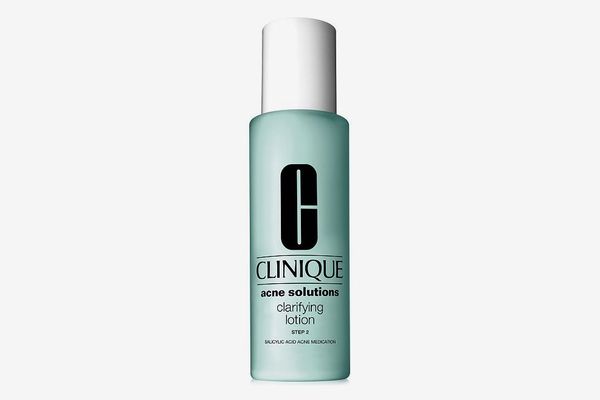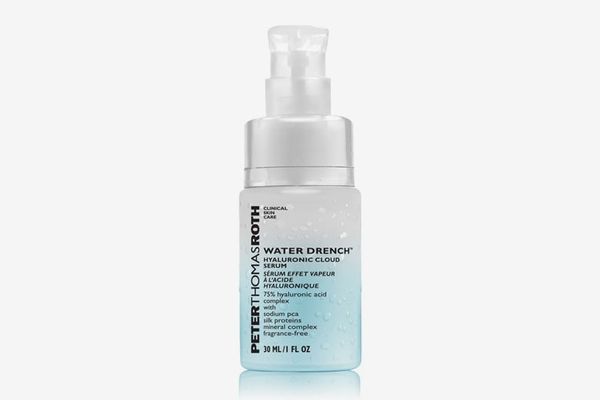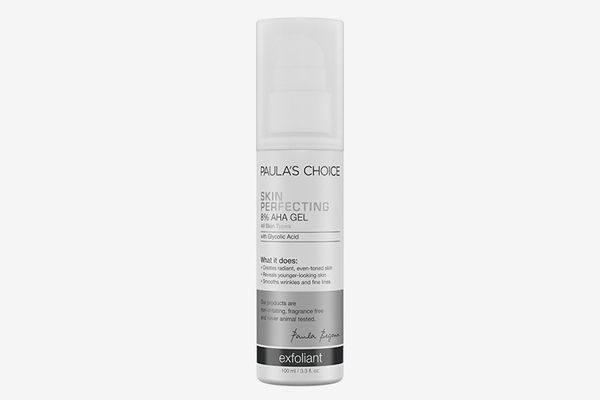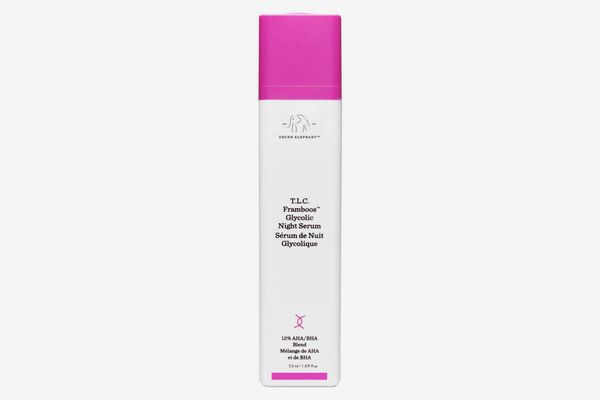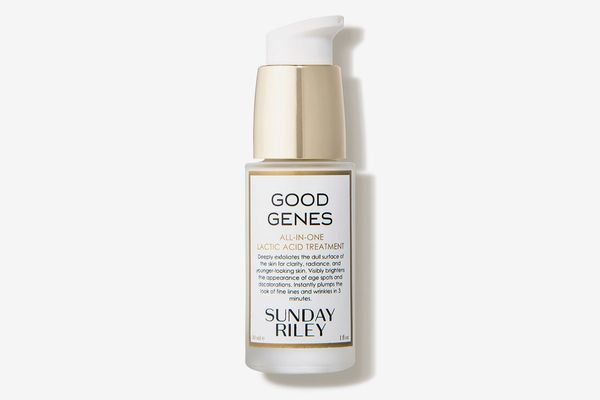
The Skin We’re In: Because sometimes beauty really is skin deep.
Acids are totally groovy. Just ask your aunt with that hippie tattoo or, as it turns out, any dermatologist. If you have anti-aging, anti-acne, or anti-dry-skin concerns — or, in other words, if you are human — acids are great for your face. They work by helping you get new skin quicker through a process dermatologists call “turnover.” New skin is shiny and bright, and looks better than old skin. As Dr. Julie Russak explains, “Dead cells absorb light rather than reflect it, resulting in dull-looking skin.” Below, our non-painful everything guide to the essential face acids.
Glycolic acid is a good starter acid.
Celebrity dermatologist Dr. Patricia Wexler says that there are about 16 acids regularly in rotation at her office. Of them, glycolic is the most popular. If acids were a boy band, glycolic acid would be your Justin Timberlake — the one liked by everybody. A type of alpha-hydroxy acid, it’s often recommended by dermatologists to acid virgins because it’s gentle and has proven anti-aging properties. Compared to other acids, glycolic has the smallest molecules and thus penetrates the skin most easily for dramatic results. Dr. Meghan O’Brien of Tribeca Park Dermatology explains: “Glycolic acid stimulates collagen, which helps with fine lines, wrinkles, and the general tone of the skin.” Dr. Harold Lancer, dermatologist to Beyoncé and Kim Kardashian West, suggests trying a 6 to 10 percent glycolic- or fruit-acid-based cream twice a week for two weeks for results.
Salicylic acid is best for acne.
If you’ve ever blindly grabbed at a drugstore acne product in a zit-related panic, you’ve probably already tried salicylic acid. A type of beta-hydroxy acid, salicylic is the second most common acid because of its ubiquity in acne products. As its molecules are larger than glycolic, its treatment percentages are lower. Reach for a product with salicylic acid when you want to get rid of pimples — its anti-inflammatory properties will help dissolve dead-skin buildup. Because it’s great at unclogging pores, Dr. Wexler also recommends it to people with larger pores who want to minimize their appearance.
Hyaluronic acid is the moisturizing acid.
If you have dry-skin concerns, try hyaluronic acid. It’s not like the others in that it doesn’t dissolve dead skin. It’s a natural carbohydrate and humectant found in the human body that cushions and lubricates skin. Babies are born with a high amount of hyaluronic acid and the amount in our bodies decreases as we age. It can be found in moisturizers and as an injectable filler, with Juvederm and Restylane.
Lactic acid can help you moisturize and exfoliate at the same time.
Lactic acid is the rare acid that’s a moisturizing exfoliant. Dr. Wexler explains that it’s a milder version of glycolic that’s great for smoothing the skin, whether it be on your legs or your face. She doesn’t use it very often on the face as it’s so mild — but its mildness does make it perfect for those with sensitive skin. It has a particular scent that’s sort of like a metallic-y yogurt. If you use Sunday Riley’s Good Genes, you’re familiar with this perfume — a core ingredient in it is lactic acid.
If you’re scared of acids, try a wash.
If you haven’t used any acids before and are nervous, try incorporating one into your routine with a wash. Dr. O’Brien says, “With a wash you can limit the amount of contact time with the skin and avoid over-drying.”
Don’t try an acid peel at home.
Acids are not necessarily going to hurt. If you’re using a moisturizer or face wash with an acid, it might slightly tingle for a brief amount of time. If you are getting a professional chemical peel, it will tingle for a longer length of time. But if you are Amazon-ing DIY acid peels late at night, it will hurt. Half the reviews for acid peels on Amazon vacillate between “This was amazing~!~” and “This gave me a chemical burn so bad that I couldn’t leave my house for two weeks.” You are not the exception. You are the rule; you will get burned. Unsurprisingly, Dr. Lancer cautions against attempting your own medical-grade peel at home: “You risk extremely serious burns, scarring, and permanent damage to the skin.”
You can only tell if acids are working over time.
Dr. Lancer explains how you can tell whether your acids are working: “Acids should noticeably brighten and even out the skin; you will notice pigmentation, freckling, and unevenness lessen over time. You will not necessarily ‘feel’ anything, but skin should be smoother to the touch after a period of regular use. It is also quite easy to notice when you have overused acids: Your skin will appear red, irritated, itchy, and dry. If this occurs, stop the use of the product for a few days and amp up your moisture application.”
Don’t go smearing a pineapple on your face.
Sure, you could smush a bunch of oranges and pineapples on your face and hope that you’re giving yourself a fruit peel, but, unsurprisingly, all the dermatologists we interviewed don’t suggest that. Not even with organic fruit. Dr. Lancer simply says, “It is possible, but not advisable.”
This article was originally published February 3, 2015. It has been updated throughout.
Shop the Story
If you buy something through our links, New York may earn an affiliate commission.



